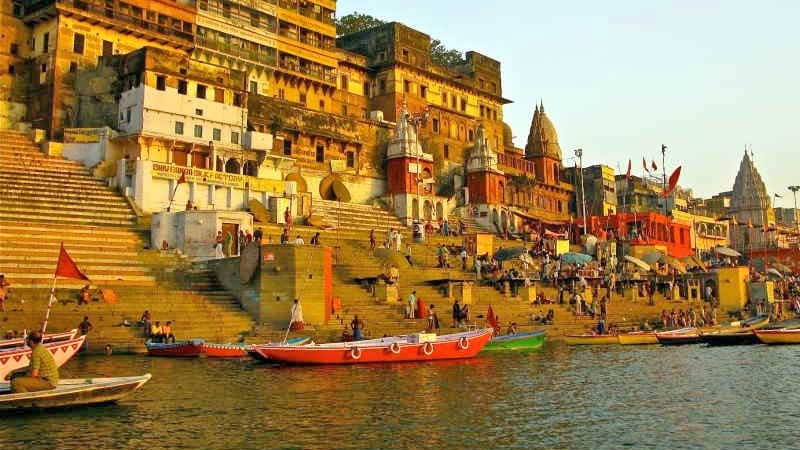
About Varanasi
Banaras is older than history, older than tradition, older even than legend and looks twice as old as all of them put together - Mark Twain.
Information on Varanasi
Varanasi, the world's most ancient city, which is still as dynamic as ever, is situated on the crescent left bank of the sacred Ganga, at the confluence of Varuna and Asi. It can be compared with Babylon & Nineva of 7th century BC. The name Kashi, the supreme centre of pilgrimage, are found in the Upanishad too. Varansasi is one of the seven puris.
History of Varanasi
According to mythological accounts, Kashya, son of Suhotra founded the city, 1200 years before the birth of Christ. The name Kashi was derived from Kashya. A second opinion is that, at the time at the time of sunrise the sky of Varanasi becomes rosy-red, i.e. 'Kashaya' (Saffron)and from Kashaya it is Kashi (City of Lights). Even later, Varana, King of Kashi, established a temple dedicated to goddess Varanasi and Kashi was renamed as Varanasi. Again, it is found in Bananpuran that from the right leg of Abbay Purush (a part of Vishnu) the river Barunam the destroyer of sins and the lord of prosperity and river Asi emerged from left foot. The name Varanasi is a combination of Varuna and Asi. In the middle ages Kashi was under the rule of Kannauj for a while. Later, in the 7th century Kashi was won by the hands of Muslim rulers. A number of temples were destroyed and was renamed as Muhammadabad though for a short period. in the 18th century. In 1738 Varanasi was reoccupied by Hindus and the Britishers arrived here in 1775.
Varansi has the reputation of being a second home for Bengalis and pious Hindus cherish long desire to spend their last days here. It is full of temples. Some are age old and other dazzle the eye with their splendor and majesty. Inspite of the extracting Pandas and polluted water of the Ganga, the Indian tradition of the Vedas, associated the ghats of Varanasi is still untarnished. Even today the melodious recitation of hymns in the early dawn before sunrise casts a magic spell upon the atmosphere.
Tourist Attractions in Varanasi
The Viswanath Temple of Varanasi is one of the most scared of Hindu pilgrimages. It is said that Ganga of Kashi is one of the most sacred place among all the pilgrim centres in the three worlds of Heaven. Earth and the Nether World (Patal). According to the Puranas, salvation comes to one who lives on the banks of the Ganga at Kashi. The sipping of a handful of Ganga water gives one of the virtue equivalent to that of a Aswamedh Yajna. Passing of 3 Nights on the banks of the Ganga gives one deliverence from the tortures of hell. That is why pious Hindu make an eager rush to the ghats of Ganga for a dip in the holy water which is supposed to earn them a great deal of virtue. Varansi or Kashi has also the distinction of being one of the 51 places (Pithas ) that received the Sati's bejewelled Kundal(ear - ring) which fell at Manikarnika Ghat. The fame of Hindu University of Kashi has crossed the country's border and spread all over the world.
Sarnath and Ramnagar are of no little attraction to the tourist. Sarnath, a Buddhist and Jain centre of Pilgrimage and a commercial town. It is from here that the Buddhism was first disseminated. This is why Varanasi or Kashi has a place of prime imortance in the tourism map of India and tourists from all over the globe are visiting Varanasi. Though during British occupation the name of Benaras was more common, the place was formally named as Varanasi or Kashi by an official announcement in 1956. The city is rapidly expanding from Raj Ghat(adjoining the bridge) to Asi Ghat. Varansi is visited through out the year however, the best and ideal time to visit Kashi or Varanasi is during October to March.
Temples in Varanasi
The main attraction of Varanasi is Ganges and the Kashi Vishwanath Temple is situated on the bank of Ganga in the old township. Vishwanath of Kashi occupies the highest rank among all the Hindu Gods and it is a sacred place of the Hindus. The temple was raided by Muslim invaders druing 11-17th centuries, and renovations were also made each time. The original Temple was repaired in 1585 by Todarmal, Revenue Misnister of Akbar, and was demolished by Aurangzeb in the 17th century and the Great Mosque or a masjid was constructed on its site. After the demolition of the old temple, Rani Ahalybai of Indore built this temple. Th beautiful bell of the temple is a gift from the Maharaja of Nepal. While touring Kashi, the the Ramnagar Palace of Kashi, built on 17th century on the opposite bank of the Ganges should also be seen.
Gyanvapi or the well of knowledge is to the north of the temple. According to the Purana, it was dug by Ishan or Shiva by his trident (Trishul). Then Lord Vishwanath as bathed with a hundered pitcherfuls of water of the well. Acording to another opinion, people perfomed self immolation by drowning themselves in the well to salvation. The Gyanvapi Temple was built by Rani Baijabai of Gwalior in 1830.
The spired Tulsi Manas Mandir, built in 1964 in memory of the author of Ram Charit Manas> is an object of great interest for visitors of Kashi or Varanasi. The deities here are Shri Ram, Lakshman and Sita. The whole of Ramcharit Manas, the Ramayana in Hindi us inscribed here in white marble.
Bharat Mata Mandir to the west of Godawlia is unique. Gandhiji, father of Nation, inaugrated it in 1936.
Sarnath: It was at Sarnath that the religion of the Buddha first blossomed. Siddhartha, the prince of Lumbini attained enlighteenment at Bodhgaya and preched his first sermon of Mahadharmachakra which contains the essence of Buddhisim gaining absolute peace, ultimate knodlwedge and total emancipation by follwoing the eight-fold path to his five disciples at Sarnath. The name Sarnath has been derived fro Saranganath, Sarang meaning deer. In the course of time when Buddhism was on he decline the Huns made the first onslaught on Sarnath. It was totally destroyed owing to repeated Muslim invasion. Sarnath was rediscovered by Jagat Singh, Dewan of Raja Chait Singh of Varanasi in 1794.
The ghats of the Ganges are highly attractive to tourists. All these Ghats, extending over a 5Km stretch are busy all the day. Priests seated under huge bamboo umbrellas are conducting all the Hindu religious rites from birth to death. It is marvellous sight to see people bathing in the Ganges in the morning hour and salute the first rays of the rising sun.
Dasaswamedh, being centrally located and one the scared Ghats. A dip at Dasaswamedh gives the devotee the same merit as of an Aswanedh Yagna.
How to Reach Varanasi
There are several ways to reach Varanasi from Delhi, each with its advantages and disadvantages. Here's a breakdown of the options:
By Air
Fastest: Flying is the quickest way to get to Varanasi, taking approximately 1.5 to 2 hours for a non-stop flight.
Costly: However, it's also the most expensive option, with flight prices starting from around INR 4,000 for a one-way ticket.
Convenient: Flights are available from both Indira Gandhi International Airport (DEL) and Delhi Domestic Airport (DLI) to Lal Bahadur Shastri International Airport (VNS) in Varanasi.
By Train
Affordable: Taking the train is a more budget-friendly option, with fares starting from around INR 360 for a sleeper-class ticket.
Scenic: Train journeys offer a glimpse into the Indian countryside, passing through villages, fields, and rivers.
Time-consuming: The train journey from Delhi to Varanasi takes between 10 and 18 hours, depending on the train you choose.
By Car
Flexible: Driving gives you the most flexibility and allows you to stop at your own pace along the way.
Time-consuming: Driving from Delhi to Varanasi takes approximately 14 to 16 hours, depending on traffic and road conditions.
Requires planning: You'll need to plan your route, arrange for car rental if you don't have your vehicle, and factor in fuel costs.
Ultimately, the best way to reach Varanasi from Delhi is the option that best suits your individual needs and preferences.
Make Your Trip Now
MOST POPULAR PACKAGES
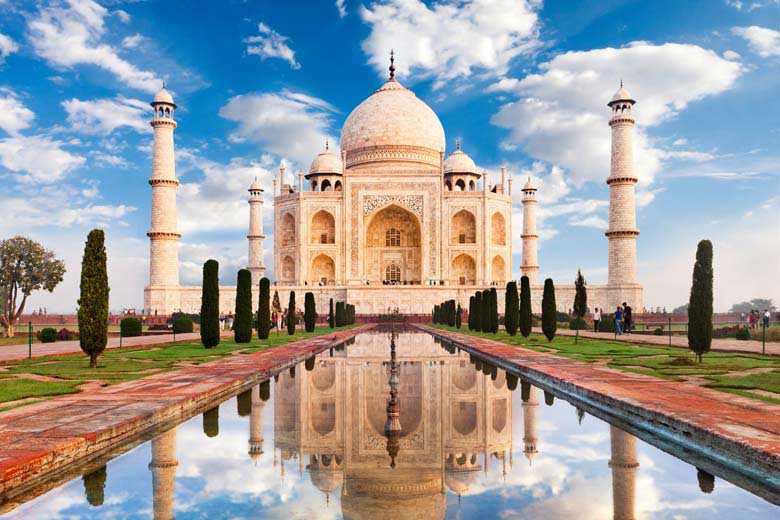
6 Nights / 7 Days
Golden Triangle Vacation Tour
India’s golden triangle is a tourist circuit which includes: Delhi, Agra (including the Taj Mahal), and Jaipur. These trips usually 7 days and do the trip as a circuit starting and ending in Delhi.
View Package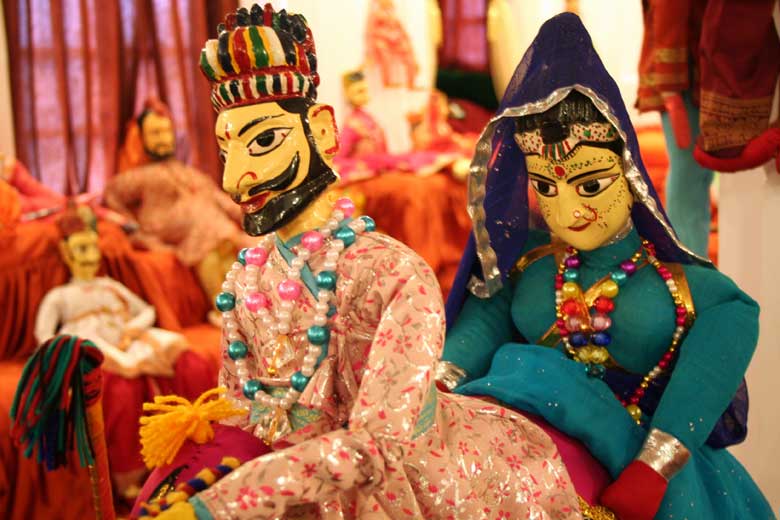
16 Nights / 17 Days
Rajasthan colorful Tour
Coloruful Rajasthan Tour is one of the most popular circuit of India. This tour package accommodates you to endure Rajasthan in all its different colors.
View Package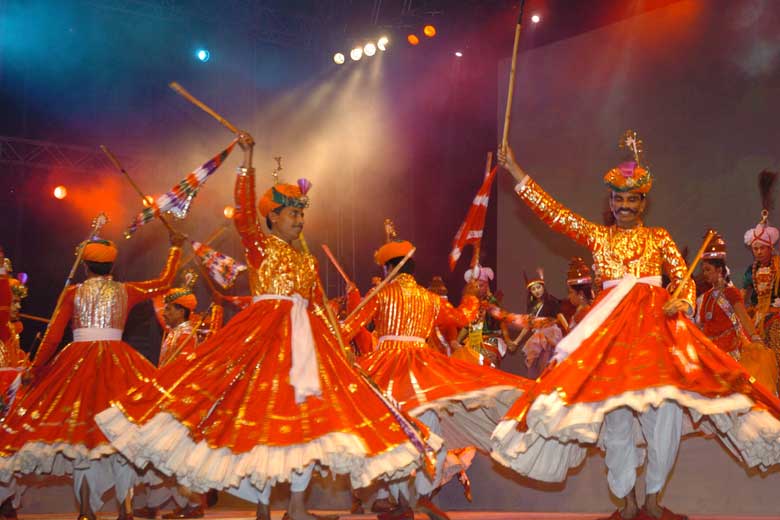
10 Nights / 11 Days
Rajasthan Cultural Tour
The Rajasthan state represents an unusual diversity in all its forms - people, culture, customs, costumes, cuisine, dialects and music and haveli's.
View Package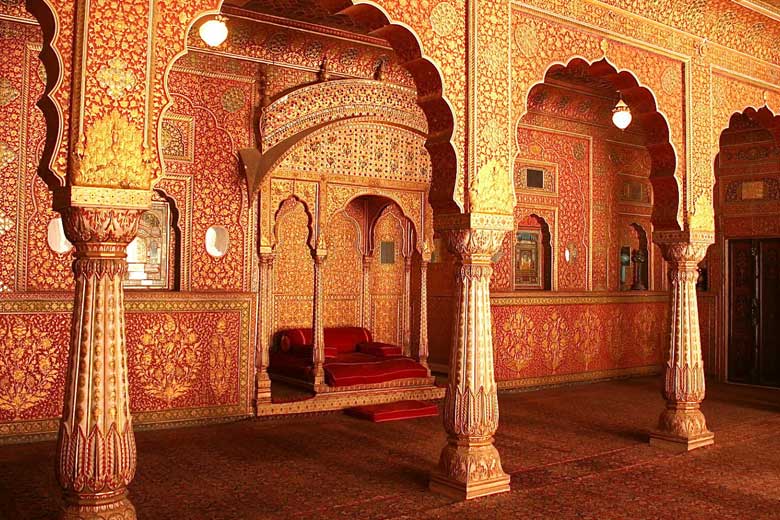
12 Nights / 13 Days
Rajasthan Fort & Palace Tour
Rajasthan is famous all over the world for its stunning forts and palaces that have been gloriously standing since decades in this princely state.
View Package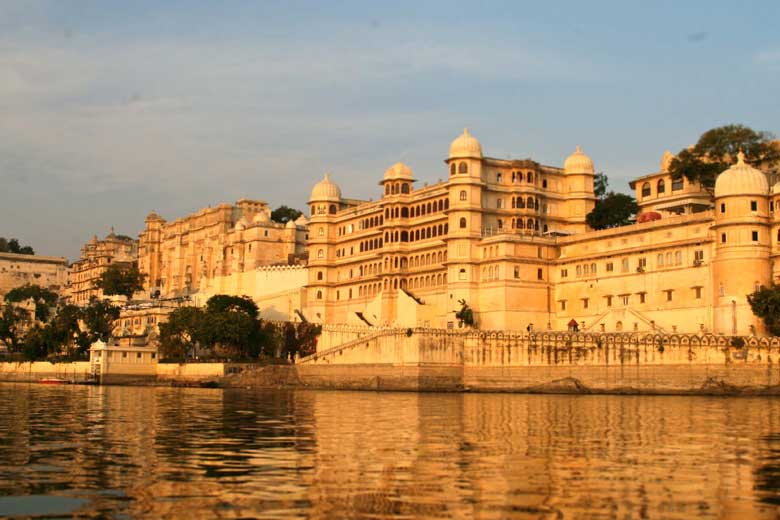
11 Nights / 12 Days
Rajasthan Heritage Tour
Rajasthan known as the "land of kings"provides some marvelous marks from the history in the form of its forts, palaces, mansions and haveli's.
View Package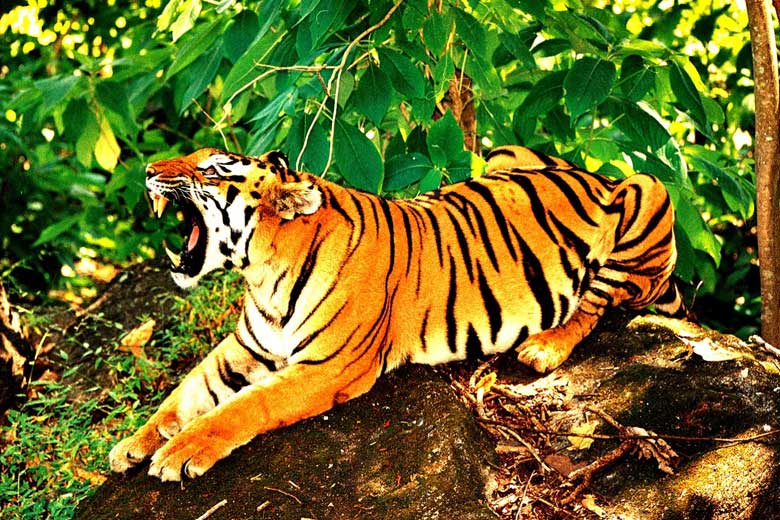
06 Nights / 07 Days
Rajasthan Wildlife Tour
The name Rajasthan has a habit of invoking the images of sun-bathed sand dunes of the Thar Desert, the rustic turban and mustache of Rajasthani men and women’s ghagra.
View Package
 Gujarat Toursim
Gujarat Toursim
 IATO -
Indian Association of Tour Operators
IATO -
Indian Association of Tour Operators
 +91-9811175768
+91-9811175768
